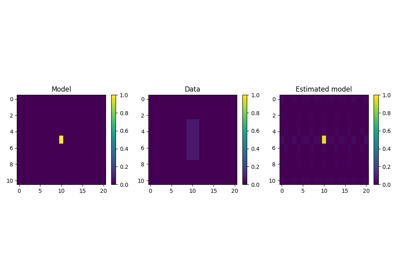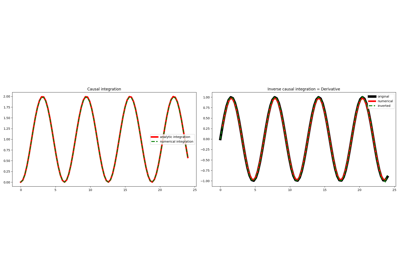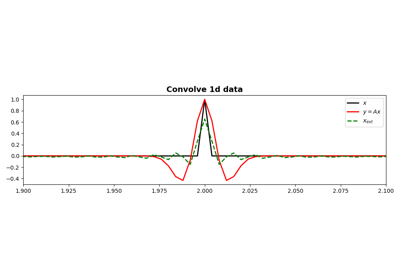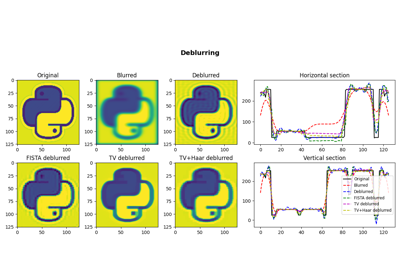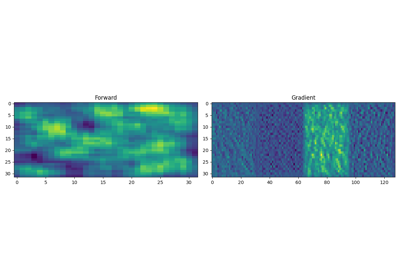pylops.signalprocessing.Convolve2D#
- class pylops.signalprocessing.Convolve2D(dims, h, offset=(0, 0), axes=(-2, -1), method='fft', dtype='float64', name='C')[source]#
2D convolution operator.
Apply two-dimensional convolution with a compact filter to model (and data) along a pair of
axesof a two or three-dimensional array.- Parameters
- dims
listorint Number of samples for each dimension
- h
numpy.ndarray 2d compact filter to be convolved to input signal
- offset
tuple, optional Indices of the center of the compact filter
- axes
int, optional New in version 2.0.0.
Axes along which convolution is applied
- method
str, optional Method used to calculate the convolution (
directorfft).- dtype
str, optional Type of elements in input array.
- name
str, optional New in version 2.0.0.
Name of operator (to be used by
pylops.utils.describe.describe)
- dims
Notes
The Convolve2D operator applies two-dimensional convolution between the input signal \(d(t,x)\) and a compact filter kernel \(h(t,x)\) in forward model:
\[y(t,x) = \iint\limits_{-\infty}^{\infty} h(t-\tau,x-\chi) d(\tau,\chi) \,\mathrm{d}\tau \,\mathrm{d}\chi\]This operation can be discretized as follows
\[y[i,n] = \sum_{j=-\infty}^{\infty} \sum_{m=-\infty}^{\infty} h[i-j,n-m] d[j,m]\]as well as performed in the frequency domain.
\[Y(f, k_x) = \mathscr{F} (h(t,x)) * \mathscr{F} (d(t,x))\]Convolve2D operator uses
scipy.signal.convolve2dthat automatically chooses the best domain for the operation to be carried out.As the adjoint of convolution is correlation, Convolve2D operator applies correlation in the adjoint mode.
In time domain:
\[y(t,x) = \iint\limits_{-\infty}^{\infty} h(t+\tau,x+\chi) d(\tau,\chi) \,\mathrm{d}\tau \,\mathrm{d}\chi\]or in frequency domain:
\[y(t, x) = \mathscr{F}^{-1} (H(f, k_x)^* * X(f, k_x))\]Methods
__init__(dims, h[, offset, axes, method, ...])adjoint()apply_columns(cols)Apply subset of columns of operator
cond([uselobpcg])Condition number of linear operator.
conj()Complex conjugate operator
div(y[, niter, densesolver])Solve the linear problem \(\mathbf{y}=\mathbf{A}\mathbf{x}\).
dot(x)Matrix-matrix or matrix-vector multiplication.
eigs([neigs, symmetric, niter, uselobpcg])Most significant eigenvalues of linear operator.
matmat(X)Matrix-matrix multiplication.
matvec(x)Matrix-vector multiplication.
reset_count()Reset counters
rmatmat(X)Matrix-matrix multiplication.
rmatvec(x)Adjoint matrix-vector multiplication.
todense([backend])Return dense matrix.
toimag([forw, adj])Imag operator
toreal([forw, adj])Real operator
tosparse()Return sparse matrix.
trace([neval, method, backend])Trace of linear operator.
transpose()

